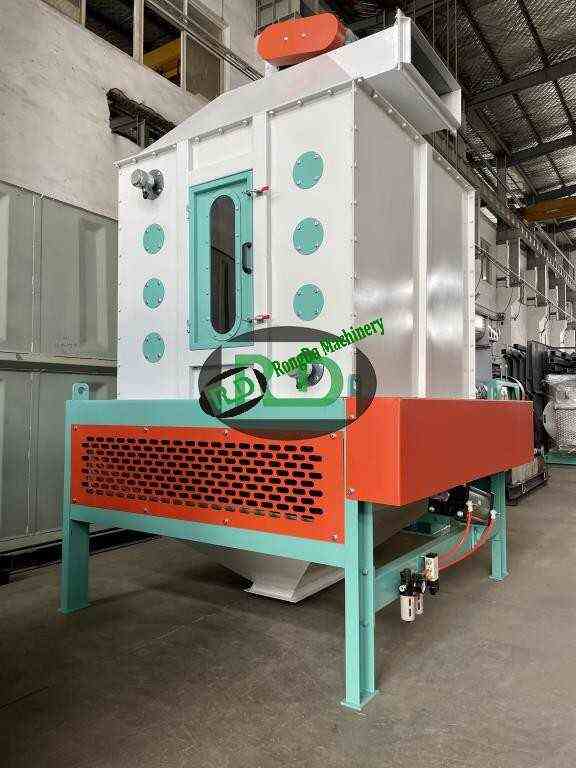Welcome to Rongda Machinery Co., Ltd
Toggle Navigation
When the pelleting process is used, the cooling of the pellets is crucial. The countercurrent cooler is a device that can cool the particles coming out of the granulator at a temperature of 70 ° C to 90 ° C to slightly above room temperature 3 ° C to 5 ° C, and reduce its moisture to a safe level (≤12.5%). This cooling process facilitates the transport, storage and preservation of pellets.
When the pelleting process is used, the cooling of the pellets is crucial. The countercurrent cooler is a device that can cool the particles coming out of the granulator at a temperature of 70 ° C to 90 ° C to slightly above room temperature 3 ° C to 5 ° C, and reduce its moisture to a safe level (≤12.5%). This cooling process facilitates the transport, storage and preservation of pellets.

The working principle of the countercurrent cooler is to stack the high temperature and high humidity particles evenly in the cooling box through the rotary closed air feeder. The cold air enters the cooler from the bottom of the slide valve discharge mechanism and the upper gap of the collector in an all-round way, and vertically passes through the material layer for heat exchange with the wet and hot particles, and then is sucked out by the air suction system, so that the particles can be cooled. The cooling time is controlled by the position of the loading and unloading level. When the granular material layer reaches the loading level height, the motor starts to discharge, and when the granular material layer is lower than the unloading level height, the motor stops running and stops discharging.
There are two ways to control the level of the cooler: a, single level + time relay control. The material level device is in the high material level position, and the material is automatically discharged when it reaches the high material level. The discharging time can be controlled by the time relay. This method ensures the maximum thickness of the material layer, while the discharge speed determines the thinnest material layer. b, double level control method. When the material reaches the high level, the discharge begins, and when the low level is reached, the discharge stops. This method can ensure the thinnest material layer at the lower level and the thickest material layer at the upper level.
Counterflow coolers are widely used at home and abroad because of their remarkable cooling effect, high degree of automation, low noise, simple operation, less maintenance and low energy consumption.